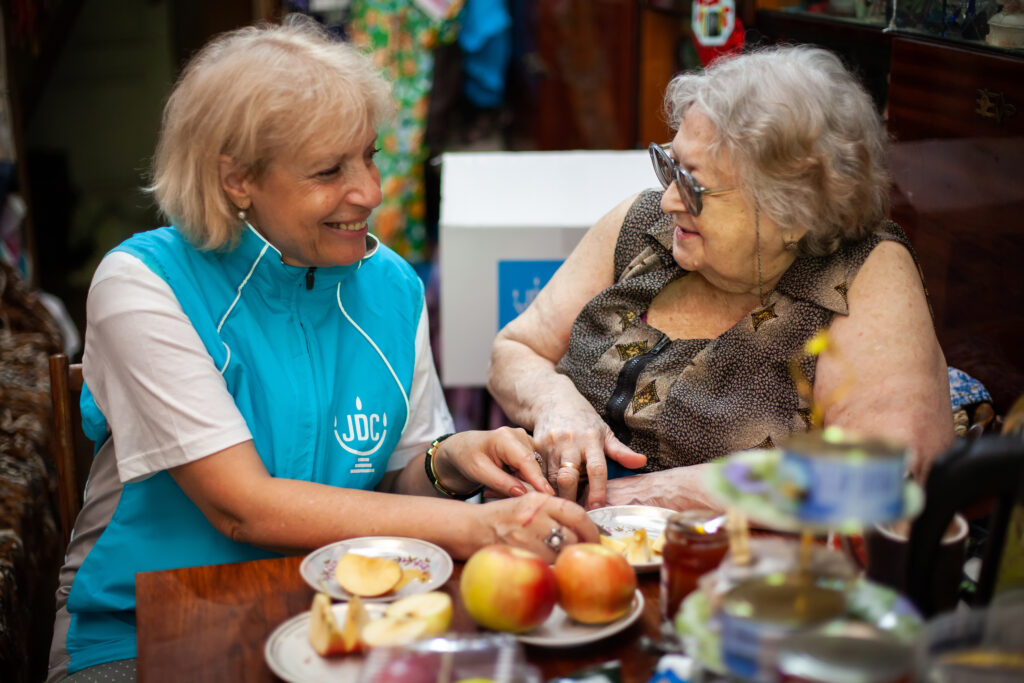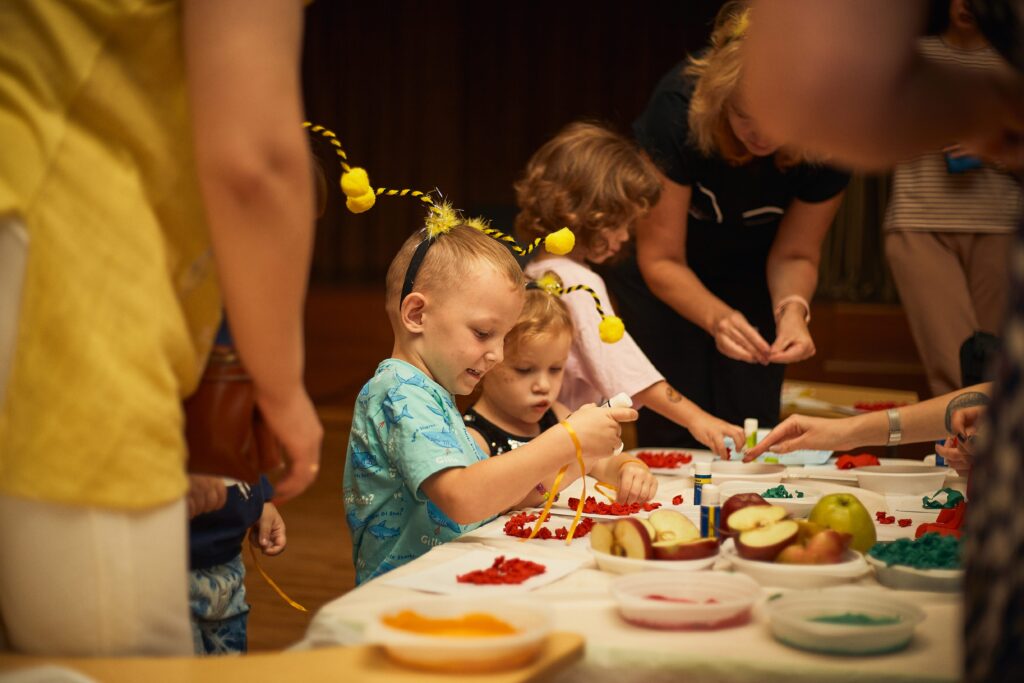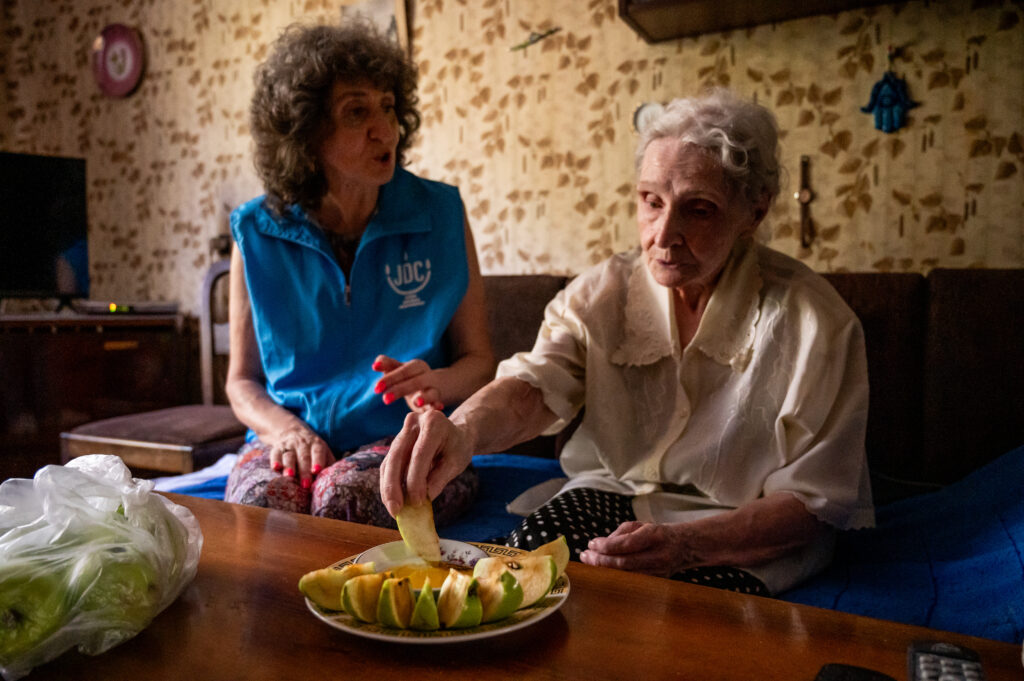What is Rosh Hashanah? Also known as the Jewish New Year, Rosh Hashanah is a celebration of renewal and reflection that marks the beginning of the High Holy Days. Rosh Hashanah is a time to welcome new beginnings — and this holiday resonates deeply with JDC’s life-saving mission. Since our founding in 1914, JDC has been cultivating a better future for Jews around the world.
Let’s dive in and explore Rosh Hashanah’s timeless significance for Jews everywhere.
Rosh Hashanah: Core Themes
Rosh Hashanah invites Jews to reflect on their actions, seek forgiveness, and embrace the promise of what’s to come. It commemorates the creation of the world and encourages individuals to assess their deeds over the past year. Families gather to enjoy festive meals filled with symbolic foods that embody hope and sweetness for the year ahead.
But Rosh Hashanah isn’t just a New Year celebration — it’s a time when God evaluates the deeds of humanity, initiating the Ten Days of Awe. During this period, individuals focus on repentance and spiritual cleansing. Traditional observances include the sounding of the shofar (a ram’s horn), which calls individuals to awaken spiritually and seek renewal.
Families partake in festive meals featuring symbolic foods, like apples dipped in honey, to represent hopes for a sweet year ahead. These practices, alongside the connected holiday of Yom Kippur, emphasize themes of reflection, prayer, and community. Through these traditions, Jews embrace the spirit of renewal and shared purpose, strengthening bonds within the community.
How Do You Celebrate Rosh Hashanah?
How do you celebrate Rosh Hashanah? Families can create a meaningful atmosphere by decorating their homes with holiday symbols, like apples and honey. Setting the table with beautiful dishes and lighting candles adds to the festive spirit, fostering connection and tradition. Also, trying fruits you’ve never had before is another way to welcome the Jewish New Year.
Sephardic and Mizrahi Jews incorporate their own culinary traditions into the holiday festivities. For instance, Jews from the former Ottoman Empire have a custom called yehi ratzones, a set of appetizers that include dates, leeks, spinach, squash, black-eyed peas, the cheek-meat of a cow, or a fish head.
Common ways to observe the holiday include reading from the Torah, sharing reflections, and engaging in prayers highlighting repentance and hope. Tashlich, casting away sins by tossing bread crumbs into water, is a beloved tradition. Crafting greeting cards for friends and family spreads joy and invites others to join in the celebration. To enhance your Rosh Hashanah experience, consider using resources like traditional recipes, prayer books, and educational materials. Community gatherings and prayer services also foster unity and shared purpose. Traditional prayers and the sounding of the shofar evoke feelings of hope and renewal. These customs and practices reinforce the collective commitment to self-improvement and spiritual growth.
The Historical Origins of Rosh Hashanah
The origins of Rosh Hashanah are deeply rooted in the Torah, specifically in Leviticus 23:23-25, where it is described as a day of rest marked by the sounding of the shofar. This ancient context underscores the holiday’s spiritual and communal significance. Over centuries, Rosh Hashanah has evolved, initially focused on solemn self-examination but now enriched with festive meals and symbolic traditions like apples dipped in honey.
As global Jewish communities adapted their customs to local cultures, they maintained the holiday’s core elements, resulting in unique expressions of Rosh Hashanah. From shofar melodies to festive foods, each community’s interpretation adds to the rich tapestry of Jewish heritage.
When is Rosh Hashanah?
When is Rosh Hashanah? Celebrated in the first two days of Tishrei — September or October —Rosh Hashanah marks the start of the High Holy Days. The observance of Rosh Hashanah transitions into the Days of Awe, culminating in Yom Kippur.
Here are dates for Rosh Hashanah in the coming years:
- 2026: September 11 at sundown – nightfall on September 13
- 2027: October 1 at sundown – nightfall on October 3
- 2028: September 20 at sundown – nightfall on September 22
- 2029: September 9 at sundown – nightfall on September 11











